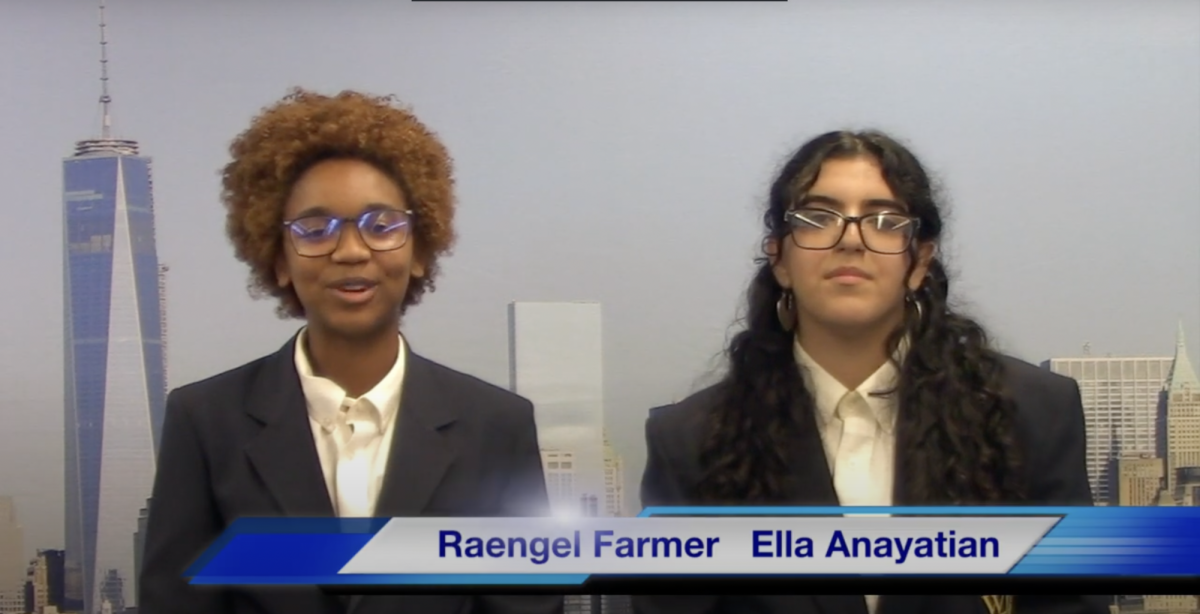by Esther Animalu, contributing reporter
This disputable leafy substance is somehow smuggled into uncharted territory. Thus, it’s then exchanged for money or other means of transactions, up until the weed has ended up into the iffy hands of the unknown.
Once the drug has been grasped, it’s primarily inhaled and exhaled by the consumer. However, it can also be devoured. They’re then morphed into a state of tranquility, escaping the critics and demands of their everyday life. Students smoking marijuana has become a growing epidemic in schools stretching across the nation.
“Weed prevents you from facing reality, when reality is at its worst,” freshman Sonya Mahadeo said.
Marijuana has been used as a stress reliever. As a result, teens would often look upon cannabis as a way to cope with the issues faced in society. It acts as a temporary escape from the outside world. The debatable drug is also prescribed to relieve physical and mental pain for certain medical complications.
“Weed causes you to feel a certain way you’ve never felt before. Even though there may be side effects, a relaxed mind is achieved in the end,” freshman Raad Ansari said.
However, young adolescents who smoke weed are unaware to the side effects that will transpire, since their brains are still developing in order to keep up with their physical growth.
“I feel like in certain circumstances cannabis is okay in order to relax you. However, marijuana shouldn’t be used on a daily basis because it can ruin a teen’s life, if they smoke it too much,” senior Taylor Maldonado said.
According to, kidshealth.org they stated,“The main active chemical in marijuana is THC (delta-9-tetrahydrocannabinol). When someone smokes marijuana, THC goes from the lungs into the bloodstream. From there, it ends up in the brain and other organs. THC connects with a receptor on nerve cells in the brain. When these nerve cells are in the parts of the brain that govern sensory perception and pleasure, it causes the marijuana high.”
“Marijuana is definitely a controversial topic. It has its benefits and disadvantages. It becomes a major concern for teens once they start getting addicted to the drug and it starts to dictate their lives,” senior Aliyah Cortez said.
In addition, kidshealth.org, goes on to mention that, “THC also connects with receptors on nerve cells in other parts of the brain. When those parts of the brain are under the influence of marijuana, it can cause unwanted side effects. Such as difficulty thinking and problem solving, problems with memory and learning, loss of coordination and distorted perception.”
As a result, weed can enable the actions and mental thoughts of teens to be uncontrollable and toxic to the functions of society.
“When life has too much baggage, and I’m feeling down, I consider the crushed leaves in a plastic bag. It causes me to feel dizzy, but when you’re high, you have peace of mind,” a freshman said.
Furthermore, various people may be unaware of the urgency of this conundrum. As a result, they may conclude that the chances of a teen actually purchasing then smoking marijuana is highly unlikely, and that only a minimal range of students are actually smoking weed to begin with. Despite the fact that not all states have legalized recreational pot, numerous students still have perpetual access to the drug.
“I feel that weed should only be used for medical purposes. For certain types of diseases, doctors prescribed marijuana to soothe the pain. However, that doesn’t give teen the right to smoke it at their expense,” junior Jenna Kahn said.
According to Norml, a pro cannabis nonprofit, stated that, “In a recent study conducted by the National Center on Addiction and Substance Abuse at Columbia University, is released some startling results about teens and drugs. In their study, they found that 40 percent of teens could get marijuana within a day; another quarter said they could get it within an hour.
Similarly, Norml, a pro cannabis nonprofit, went on to report that,“in another portion of the survey, teens between the ages of 12 and 17 say it’s easier to get marijuana than buy cigarettes, beer or other prescription drugs. The number of students who smoke weed is up 37 percent from 2007.”
Marijuana has somehow managed to bypass the security system for ages; the broken drug system has made it a more tangible drug. This has contributed to the skyrocket of teens who are constantly using this drug. As a result, stricter laws must be acquired in schools, in order to decrease the rate of substance abuse.
“I don’t approve of weed at all. I feel that marijuana should be banned for good. If teens are constantly smoking weed, they’re basically damaging their health, and the effects from it can carry on into the future. Teens are going to think its normal to smoke weed, when it should only be used for medical purposes,” sophomore John Flinstone said.
Numerous people are concluding that the National Security should do more to prevent people as a whole from rebelling against smoking weed, and enforce the banning of pot in all states that ruled marijuana illegal.
Based on Well Blogs by the New York Times, “findings based on a survey that consisted of 4,097 Connecticut students, ranging from grades nine through twelfth. In the study, about one in five girls and slightly more than one in four boys reported having used marijuana in the past month.”
In relation, Well Blogs also mentioned that the most likely users were, “11th and 12th graders, as well as teenagers who had average grades in the B to C range or lower. Teenagers in single-parent households were more likely to report marijuana use than those in two-parent homes.”
Based on the study, the common link between teens who use marijuana are often associated with drinking, gambling, gang violence, smoking cigarettes, self-harming, depression, stress, and other teen-related issues.
“Weed is bad, it slowly kills you and takes your money away. Stay in school and try not to get overwhelmed with pressure,” freshman Joshua Kim said.
All in all, in order to effectively combat the growing rate of illegal substance abuse with teens, there has to be a parental and school effort. In order to inform all students about the fatal repercussions of smoking the enticing, hazardous, leafy substance.





































